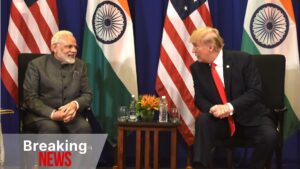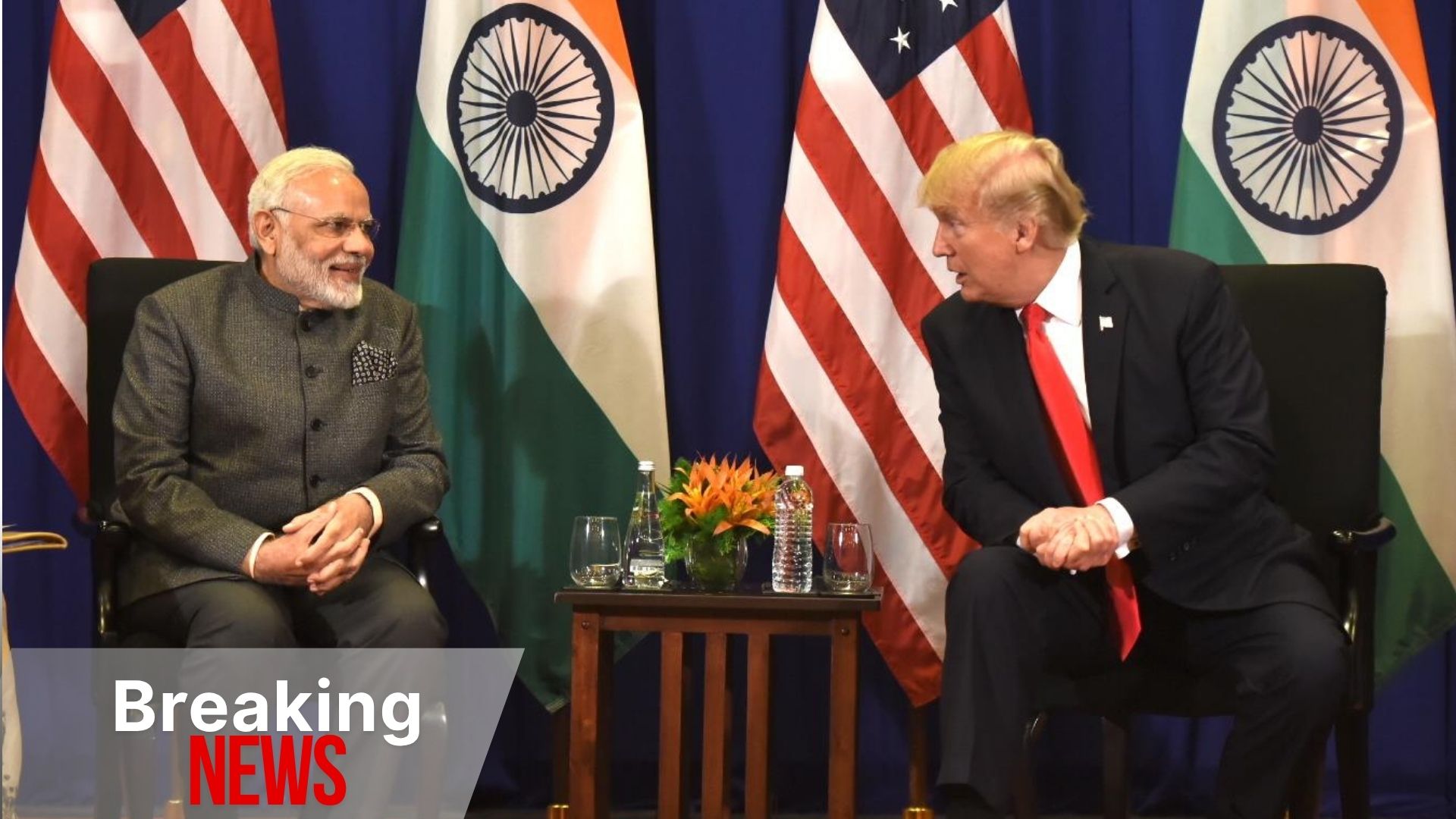The global economy is no complete stranger to geopolitical shifts that ripple across borders, markets, and markets. The most recent buzz surrounds a proposed United States Senate expense that targets nations buying considerable amounts of Russian oil. With a shocking 500% tariff on exports from India and China to the US, the legislation aims to financially isolate Russia in action to the continuous conflict in Ukraine. What does this mean for India, China, and the global stage at big? Here’s a breakdown of the proposed tariffs, their motivations, and prospective implications.

What Are the Proposed US Tariffs?
Key Details
- Tariff Percentage: The expense proposes an eye-watering 500% tariff on exports to the United States.
- Targeted Countries: India and China, the biggest importers of Russian oil, are the main targets.
- Item Affected: For India, this consists of pharmaceuticals, textiles, and IT services, which are among its primary exports to the US.
The initiative is spearheaded by Senator Lindsey Graham with bipartisan support, including co-sponsorship by Democratic Senator Richard Blumenthal. It also has support from President Donald Trump, who advised flexibility on enforcement but authorized the costs’s structures.
Why Has the United States Proposed These Tariffs?
The reasoning is clear however complex. The proposed tariffs aim to:
- Pressure Nations to Reduce Russian Oil Imports
India and China together represent 70% of Russian oil purchases, with India substantially increasing its share of Russian oil from less than 1% of imports to around 40-44% recently.
2. Disrupt Russia’s War Economy
By isolating and economically pushing its trading partners, the United States looks for to compromise Moscow’s capability to money its military operations in Ukraine.
3. Reinforce United States Leverage in Geopolitics
The tariffs are a tactical tool planned to bring wavering worldwide players to line up with US policies for diplomatic settlements in the Russia-Ukraine conflict.
The Impact on India
Economic Consequences
India’s economy might deal with substantial difficulties need to the 500% tariff take result, especially in the following sectors:
- Pharmaceuticals
India is an international leader in generic drug production, exporting $24.4 billion worth of pharmaceutical products in 2022. The United States is a primary location, making these tariffs a prospective economic blow.
- Textiles and Apparel
With a significant part of textile exports heading to the United States, tariffs could make Indian items prohibitively pricey, forcing purchasers to seek alternatives.
- IT Services
India’s robust IT sector, frequently seen as its crown jewel, relies heavily on US collaborations. Tariffs could interrupt these relationships and stifle revenue streams for tech companies.
Trade Relations with the United States
The United States is India’s largest export market, and these tariffs might strain among the most essential bilateral relationships in the global economy. This development is particularly striking as it accompanies discussions of a bilateral trade contract between the two nations, potentially making complex settlements.
Reliance on Russian Oil
India’s energy method has become progressively tied to Russia. It is now the biggest purchaser of the Urals crude oil grade, purchasing 77 million barrels in 2025. While this has actually brought short-term financial gains, it has likewise painted a target on India’s back for policies like these proposed tariffs.
The Impact on China
China, as another key buyer of Russian oil, also deals with steep effects. While China’s diversified economy and worldwide trade partnerships may offer some cushioning, a 500% tariff on crucial exports could dent its trade relations with the United States, especially in electronics and production.
Global Geopolitical Implications
United States Leverage vs. Economic Risks
While the proposed tariffs intend to damage Russia financially, they likewise risk destabilizing significant economies like India and China. This puts international supply chains at threat, particularly for markets like pharmaceuticals, fabrics, and IT services.
Prospective Indian and Chinese Retaliation
Both India and China could respond with vindictive tariffs or decreased dependence on US imports, even more straining international trade. Additionally, these tariffs might press the 2 nations closer together for cooperation versus US-imposed obstacles.
Russia’s Response
The Kremlin views this relocation as another effort to isolate them internationally and has cautioned that such measures could impede peace settlements relating to Ukraine.
Last Thoughts: What’s Next?
The proposed United States tariffs, set for more discussion in August, represent a critical minute in global geopolitics. For India and China, there are substantial financial stakes, as these tariffs could reshape trade relationships and worldwide supply chains. For the US, the obstacle will be balancing geopolitical goals with the possible fallout these tariffs could give international markets and its own economy.
Whether this legislation passes, and in what kind, stays to be seen. Its introduction signifies the increasing intricacies of worldwide trade in a politically charged environment.
For organizations, industries, and policymakers in India, China, and beyond, now is the time to prepare for potential disturbances. Monitoring developments and diversifying export strategies could be vital steps to mitigate dangers in an unsure worldwide landscape.
FAQs: Frequently Asked Questions
1. What are the proposed 500% tariffs?
The proposed 500% tariffs are a substantial tax on imports from India, China, and other nations that continue to purchase Russian oil. This procedure is planned to dissuade trade relations with Russia in reaction to geopolitical tensions.
2. How will these tariffs effect India’s exports?
The tariffs could seriously impact Indian exports to the US, particularly in sectors such as fabrics, pharmaceuticals, and production. Higher expenses for US importers may result in lowered demand for Indian goods.
3. Why is the United States targeting India and China?
India and China have maintained energy trade relations with Russia in spite of Western sanctions. The proposed tariffs are viewed as a technique to pressure these countries to lower their financial engagement with Russia.
4. What industries are more than likely to be affected?
Secret industries that might face disturbance consist of fabrics, machinery, electronic devices, and pharmaceuticals, which contribute significantly to bilateral trade in between the afflicted countries and the United States.
5. Exist any procedures India can require to reduce the impact?
India may require to check out diversifying its export markets, renegotiate trade agreements, and concentrate on sectors that are less dependent on United States markets to alleviate the prospective fallout from these tariffs.
6. When are these tariffs expected to be carried out?
While information are not yet settled, there is growing motion in the US government to speed up the execution of these tariffs. Businesses need to keep an eye on advancements closely for any main updates.
7. How could this circumstance impact global trade?
The introduction of such steep tariffs may contribute to heightened trade stress, disrupt global supply chains, and potentially lead to vindictive steps from affected nations.
With an incredible 500% tariff on exports from India and China to the US, the legislation aims to economically isolate Russia in action to the continuous conflict in Ukraine. While this has brought short-term financial gains, it has actually likewise painted a target on India’s back for policies like these proposed tariffs.
The proposed United States tariffs, set for more conversation in August, represent a pivotal minute in worldwide geopolitics. For India and China, there are considerable financial stakes, as these tariffs might improve trade relationships and worldwide supply chains. For the US, the obstacle will be balancing geopolitical goals with the prospective fallout these tariffs could bring to global markets and its own economy.
Click Here For More
